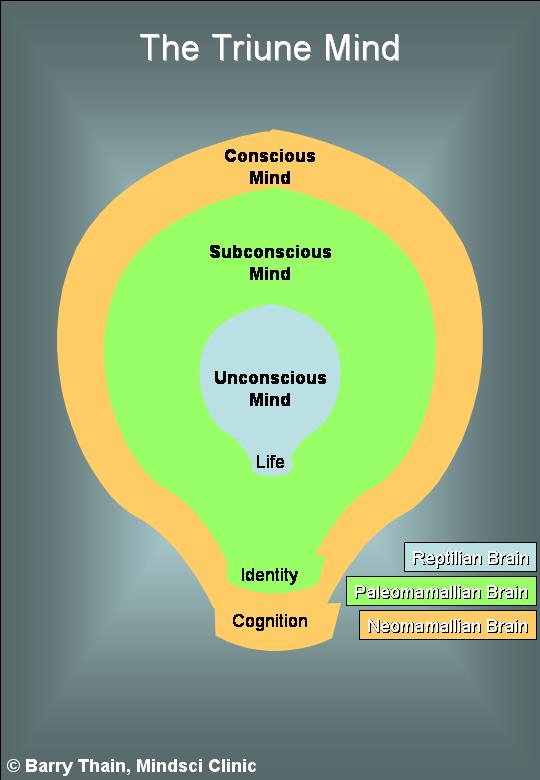The Triune Mind
Paul MacLean, who was a director of the Brain and Behaviour Lab at the US National Institute of Mental Health, worked up an evolutionary model of the brain in three parts. According to his Triune model the oldest part of the human brain is similar to that found in birds and fish, and takes care of the business of life; respiration, digestion, instinctive survival and so on. He called this the Reptilian Brain.
More recently, mammals evolved that part of the brain that deals with memory, and emotions and comprises the components of the limbic system. MacLean called this the paleomammalian brain.
Most recently, higher mammals, particularly primates and especially homo sapiens evolved the neocortex which, inter alia, facilitates speech, and which MacLean called the Neomammalian brain.
Whilst I have some doubts about the model, particularly with regard to the emotional capacity it implies of stoats, I think the model is a useful starting point for understanding much about the brain.
I cannot resist the apparent similarities between these three aspects of brain and the three major aspect of mind; unconscious, subconscious and conscious. It seems to me that MacLean's Reptilian brain is responsible for what I think of as unconscious mind – that which is still working when a boxer is laid out by a peach of a left hook. Doesn't his paleomammalian brain with it's feelings and memories look a nailed-on candidate for the physiological substrate to subconscious mind? And isn't there an appealing relationship between his neomammalian brain and consciousness?

I think so. Hence my model of the Triune Mind. I think all six concepts need refining but wouldn't it be wonderful if, instead of the great confusion of neurological and psychological concepts and language we currently have, it were possible to simplify it. So instead of reptilian brain and unconscious mind, paleomammalian brain and subconscious mind, and neomammalian brain and conscious mind, we could have, say, inner brain/mind, middle brain/mind and outer brain/mind.
Of course it isn't as simple as a three-layer onion, and is actually much more complicated than a three-dimensional Venn diagram, but I feel a compelling attraction to a marriage of the two Triune models. For me (at least) it's one of those "it's so obvious I can't believe no one figured it before," things. Someone probably has.
